American infantry anti-tank weapons (part of 4)
In the middle of the 70-x it became quite obvious that the 66-mm disposable M72 LAW grenade launcher is not able to effectively deal with new-generation tanks protected by multi-layer combined armor. In this regard, the army command in the framework of the program ILAW (English Improved Light Anti-Tank Weapon - improved light anti-tank weapons) in 1975 year, initiated the development of a new high-performance grenade launcher. It was assumed that the promising grenade launcher would replace the M72 LAW in the US military and would be adopted as a single individual infantry anti-tank weapon in the armies of the Allied countries.
The prototype grenade launcher received the designation XM132. Given the possibility of establishing mass production in European countries, the design of weapons was carried out in the metric system. Compared to the 66-mm M72 LAW, the caliber of the projected grenade launcher was increased slightly, only to 70-mm. But thanks to a number of innovations, XM132 had to surpass all the disposable grenade launchers existing at that time.
Prospective grenade launcher is almost entirely made of composites. A breakthrough innovation for the middle of the 70's was the manufacture of a fiberglass jet engine housing. Solid jet fuel used for throwing a cumulative grenade, had a record at that time energy performance. The cumulative charge was not made by casting, as is usually done, but by pressing. At the time of its development, the XM132 was considered the lightest anti-tank grenade launcher in its caliber. Another feature was the fact that the grenade launcher was not created by private military-industrial companies. All of its components were designed by the US Army Missile Laboratory at Redstone, Alabama. Work on the creation of a new generation anti-tank grenade launcher in the late 70-x, along with the creation of guided artillery shells and combat lasers, were among the top three priority projects. The bulk of the work was done in a short time within the walls of army laboratories by the end of 1975. The contract for the manufacture of prototypes, and in the long run for mass production, was concluded with General Dynamics Corporation.
At the end of 70, the leadership of the US military emphasized the speedy start of mass production of 70-mm grenade launchers. This was largely due to the increase in the strike power of the Soviet tank and motorized rifle divisions stationed in Europe, and with the massive rearmament of the main battle tanks T-64, T-72 and T-80.
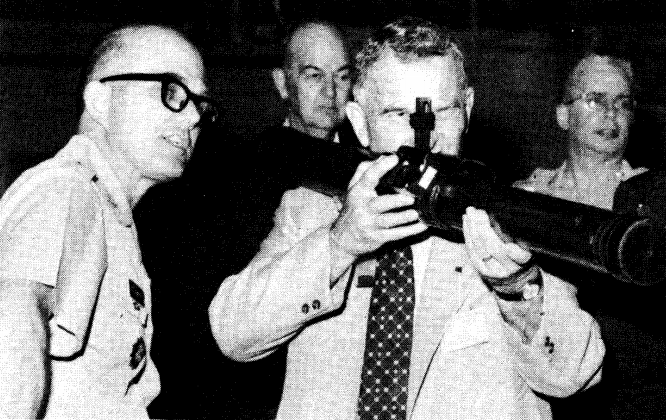
Deputy US Secretary of Defense William Clements with a prototype 70-mm Viper disposable grenade launcher
In January, 1976, the grenade launcher got its own name - Viper (eng. - adder) and soon began its tests. Simultaneously with the combat model, a training variant with a grenade containing a small pyrotechnic charge was created. Between the start of 1978 and the end of 1979, 2230 rocket-propelled grenades were launched during test firing, with a total value of $ 6,3 million.
In the 1980 year, a US Army soldier hooked up a grenade launcher. In just a year, around 1000 shots were fired with practical and combat grenades. Official military trials began in February 1981 at the Fort Benning Army Test Center. On the first day, February 25, each shooter shot eight ammunition from various positions, at fixed and moving targets. By the time the second stage of the military trials, 18 September 1981, was completed, the 1247 grenades had been fired.
In the course of the military tests, the Vipers of the experimental series demonstrated higher efficiency than those in service with the M72 LAW, but the reliability of the new grenade launcher left much to be desired. The average coefficient of technical reliability demonstrated by the propulsion system and the trigger mechanism during military tests was 0,947. There were many complaints about the unsatisfactory performance of a piezoelectric fuse, a cumulative grenade or an incomplete detonation of a warhead. On average, 15% of grenades launched for one reason or another did not work properly. After refining the fuse, reducing the threshold value of its operation, general strengthening of the structure and improving the tightness of the launch tube, during repeated tests of the grenade launcher in June-July 1981, it was possible to confirm the required level of reliability.
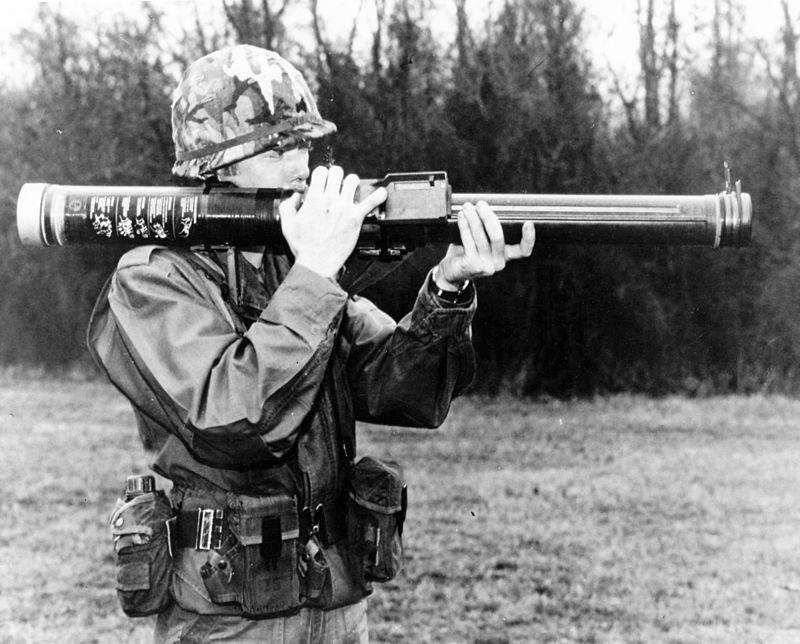
At the same time, comparative firing was carried out with a single-use M72 grenade launcher. During the tests, it turned out that the 70-mm Viper has significant advantages in terms of range and accuracy of firing, and in August 1981, the grenade launcher was put into service. Serial modification received the designation FGR-17 Viper.
According to the published data, the FGR-17 Viper grenade launcher weighed 4 kg, which was 0,5 kg more than the M72 LAW. An individual wearable ammunition of one infantryman could be a 4 grenade launcher. The length in the combat position - 1117 mm. With an initial speed grenades 257 m / s maximum sighting range of shooting was 500 m. The effective launch range for moving targets - 250 m. Armor penetration - about 350 mm. To bring a grenade launcher into action, 12 was required.

In December, 1981 of the year with General Dynamics was awarded a contract worth $ 14,4 million for the organization of mass production and the delivery of the first production batch of combat and training grenade launchers. For training personnel it was planned to use laser simulators and grenade launchers with an inert warhead. In February, the 1982 of the year, the army command allocated another $ 89,3 million for the purchase of an 60 ths. Of combat grenade launchers - that is, one Viper cost almost $ 1500. In total, the army planned to purchase 649 100 grenade launchers worth $ 882 million. Thus, the cost of a serial FGR-17 Viper grenade launcher was almost 10 times the price of the M72 LAW already in service. At the same time, according to the project curator from the army of Colonel Aaron Larkins FGR-17, twice the 66-mm grenade launcher in effective firing range and had a one and a half times more likely to destroy the target with the first shot.
However, due to too high a price and the allegedly dubious combat effectiveness, the grenade launcher was criticized by a number of high-ranking military and congressmen. In fairness it should be said that in addition to too high a cost, Viper had no other pronounced defects. Of course, he could not overcome the frontal armor of the T-72 or T-80 tanks, but he was quite able to penetrate the board with an uncovered screen. With good accuracy and range, the FGR-17 Viper at the time of its creation exceeded all existing analogues in these parameters. Carping to the "Viper" began at the stage of military trials. Government officials demanded to limit the volume of the shot to 180 dB, adjusting it to the standards adopted for small arms. The main opponents of adopting the FGR-17 Viper were the United States Audit Chamber and the US Congress Congress Armed Forces Committee. 24 January 1983 of the year during the firing practice an incident occurred with a rupture of the launch tube. Government accountants and congressmen, lobbying the interests of military-industrial corporations competing with General Dynamics, did everything to get this case widely publicized, stopped the production of a grenade launcher and stopped training-control firing under the pretext of its increased danger to military personnel. In total, with the 1978 of the year, during the shooting of more than 3000 grenades, two cases of damage to the launch tube occurred, but no one was injured.
The army command attempted to keep the Viper in service and appointed joint repeated tests with foreign-made grenade launchers. In addition to the M72 LAW and the improved Viper Variant, the British LAW 80, the German Armbrust and Panzerfaust 3, the Norwegian M72-750 (the upgraded M72 LAW), the Swedish AT4, and French APILAS took part. In addition, reusable grenade launchers were tested separately: French LRAC F1 and Swedish Granatgevär m / 48 Carl Gustaf.
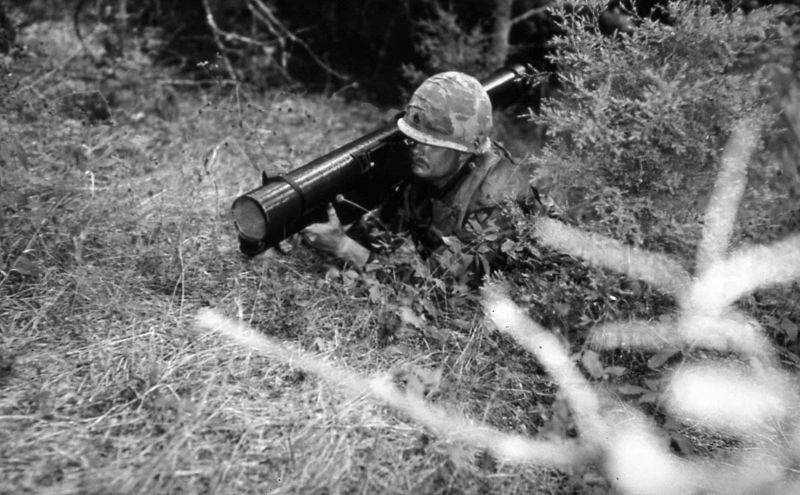
Each grenade launcher made 70 shots, while it was noted that none of them can guarantee overcoming the multi-layered frontal armor of a modern tank, additionally covered with dynamic protection.
During the test firing, which took place from April 1 to 31 on July 1983, at the Aberdeen Proving Ground, it was found that the Swedish AT4 was most suitable for the characteristics of the armor penetration, mass and cost to the one-time grenade launchers. It was also decided to keep the M72 LAW in service, but to enhance its combat performance using the groundwork implemented in the Norwegian M72-750. The sympathies of the US military for the M72 LAW were associated with its low cost, at the beginning of the 80's one copy of the grenade launcher cost the military department $ 128. Although modern tanks in the frontal projection were not too tough for him, it was believed that the massive saturation of infantry units with inexpensive disposable rocket launchers would allow the fairly numerous Soviet BMP-1 and other lightly armored vehicles to be beaten out.
After summarizing the tests, 1 of September 1983 of the year, the leadership of the Ministry of Defense stated that the contract for the production of FGR-17 Viper will be terminated, and the improved Viper Variant does not meet the requirements. At the same time, General Dynamics lost profits totaled $ 1 billion. Instead of the injured “Viper” crushing defeat, it was decided to purchase Swedish rocket launchers for the army and marines. In October 1983, a formal decision was made on the final completion of the Viper program, the removal of grenade launchers from warehouses and their disposal. The Department of Defense, enlisting the General Dynamics corporation’s assurances to increase the effectiveness and safety of the grenade launcher, attempted to reanimate the Viper Variant, but after a series of joint meetings held by high-ranking military officers and members of the House of Representatives Committee on Armed Forces in 1984, the issue was no longer returned. .
The 84-mm disposable anti-tank grenade launcher AT4 was developed by Saab Bofors Dynamics based on the 74-mm disposable grenade launcher Pskott m / 68 Miniman, adopted by the Swedish army in the early 70-x. The AT4 grenade launcher, also known as HEAT (High Explosive Anti-Tank), is designed to destroy armored and unarmored vehicles, as well as enemy manpower. The 84-mm AT4 grenade launcher used the cumulative FFV551 grenade from the reusable Carl Gustaf M2 grenade launcher, but without a jet engine operating on a trajectory. Combustion of the propellant completely takes place before the grenade leaves the reinforced fiberglass trunk reinforced with composite resin. The back of the barrel is equipped with an aluminum nozzle. Muzzle and breech slices of the grenade launcher are covered with lids, dropped when fired.

In contrast to the 66-mm M72 LAW, the mechanical trigger mechanism used in AT4 provides for the need for manual cocking before firing, with the possibility of disengaging from a cocking or arming a manual fuse on a cocking. The launch tube has a mechanical sight frame type. Aim devices in the stowed position are closed with sliding covers and include a rear sight pillar and a front sight. The mass of the grenade launcher - 6,7 kg, length - 1020 mm.
An 84-mm caliber cumulative grenade weighing 1,8 kg leaves the barrel with an initial speed of 290 m / s. Aiming range of shooting at moving targets - 200 m. For areal - 500 m. Minimum safe distance of the shot - 30 m, cocking the fuse occurs at a distance 10 m from the muzzle. The warhead, equipped with 440 g of HMX, is able to penetrate 420 mm homogeneous armor. The grenade is stabilized in flight by a six-pinion stabilizer that pops up after departure and is equipped with a tracer. It is noted that the cumulative grenade has a good zabronevy action, as well as a fragmentation effect, which allows it to be effectively used to destroy enemy manpower.
Comparing the AT4 with the FGR-17 Viper, it can be noted that due to the use of 84-mm grenades, the Swedish grenade launcher is able to penetrate thicker armor, but this superiority does not look overwhelming. At the same time, the Viper surpassed AT4 in firing accuracy and had less weight. The purchase price of grenade launchers was almost the same. After being commissioned, the American army paid for one 84-mm one-time grenade launcher $ 1480.
The official adoption of AT4 in service in the United States was 11 September 1985, after which he was assigned the index M136. In 1987, under the same designation, a grenade launcher was adopted by the Marine Corps. The license for the production of AT4 in the United States was acquired by Honeywell, but 1986 55 grenade launchers were purchased in Sweden for the emergency equipment of the American contingent in Europe in 000. Before Honeywell managed to establish its own production, the US Department of Defense acquired more than 100 000 Swedish grenade launchers. It is noteworthy that, although AT4 was produced at the enterprise Saab Bofors Dynamics for export to the United States, in Sweden itself the grenade launcher was put into service a year later. The Swedish version received the designation Pskott m / 86 and was distinguished by the presence of an additional front folding handle for ease of retention, later the front handle was used on grenade launchers made for the American armed forces. All in all, in the US, Honeywell, Inc. and Alliant Tech Systems produced more than 300 000 copies of AT4. In addition to the American army and marines AT4 grenade launchers were supplied to two dozen countries. From the countries - former USSR republics AT4 received: Georgia, Latvia, Lithuania and Estonia.
Soon after the introduction of M136 into service, the US military demanded an increase in the armor penetration capability of the grenade launcher and the possibility of a guaranteed penetration of the frontal armor of modern Soviet tanks. To this end, while maintaining the AT4 design solutions, an 1991-mm disposable AT 120-T grenade launcher with a tandem warhead was created in the 12 year. However, in view of the larger caliber, the dimensions of the weapon have increased significantly, and the mass has more than doubled. In this regard, and also because of the collapse of the Eastern bloc and the USSR, the reduction of the risk of a full-scale military conflict in Europe and a reduction in defense spending, mass production of the 120-mm anti-tank grenade launcher was not conducted.
However, Honeywell, in order to improve the combat performance of the M136 grenade launcher, manufactured at the Joliet Army Ammunition Plant in Illinois, independently introduced a number of innovations. With the help of a special bracket night sights AN / PAQ-4C, AN / PEQ-2 or AN / PAS-13 were adapted, which were shot after the shot.
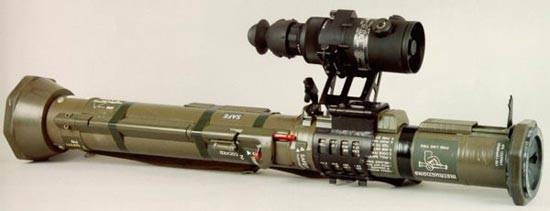
Due to the high cost of the M136 / AT4 anti-tank grenade launcher, it was too expensive to use it in the process of combat training of personnel for real firing. For training and training created two modifications that do not differ in weight and size from the original sample. One sample uses a shooting device with a special cartridge caliber 9 x19, equipped with a tracer bullet, according to the ballistics of the corresponding 84-mm cumulative grenade. Another training model of the grenade launcher is equipped with a special 20-mm projectile simulator, partially reproducing the effect of a shot from a grenade launcher. Recently, however, due to the need to dispose of single-action grenade launchers launched at the end of 80 and at the beginning of 90, during military firing, combat weapons are very widely used.
In order to increase combat effectiveness, Honeywell specialists, based on the requirements voiced by the Department of the United States Army, based on the design of the original model, created several improved versions. The modification, known as AT4 CS AST (English Anti-Structure Tandem Weapon - anti-structural tandem weapon), is designed to destroy long-term firing points and use during combat operations in the city. A fragmentation grenade is equipped with a leading charge, piercing a hole in the barrier, after which the fragmentation warhead flies into the hole and hits the enemy's living force with shrapnel. The mass of the "anti-structural" grenade launcher increased to 8,9 kg.

In order to reduce the danger zone behind the shooter, an anti-mass is placed in the barrel - a small amount of non-freezing non-combustible liquid in the container being destroyed (small balls made of non-combustible plastic were originally used). During the shot, the liquid is thrown back from the barrel in the form of splashes and partially evaporates, significantly reducing the exhaust of powder gases. However, in the version marked with AT4 CS (Eng. Closed Space - closed space), the initial speed of the grenade was reduced by about 15% and the range of the direct shot was somewhat reduced. In addition to punching walls, the AT4 CS AST grenade launcher can be used against light armored vehicles. The thickness of the armor pierced along the normal is up to 60-mm, and the diameter of the hole is much larger than with a standard 84-mm cumulative grenade.
In connection with the growth of protection of the main battle tanks, the AT4 CS HP model (eng. High Penetration - high penetration) with armor penetration to 600 mm of homogeneous armor has been adopted.

The mass of AT4 CS HP grenade launcher is 7,8 kg. The initial grenade speed is 220 m / s. Due to the decrease in the initial velocity of the projectile, the range of the aimed shot at the moving tank was reduced to 170 m. Although the armor penetration of the AT4 CS HP modification compared to the original AT4 HEAT model increased by about 30%, there is no evidence of its ability to overcome dynamic armor. From which it follows that even the most modern models AT4 can not guarantee the defeat of modern tanks.
The M136 / AT4 grenade launchers were actively used during combat operations. For the first time they were used to suppress the firing points in December 1989 of the year during the invasion of Panama. During the anti-Iraq operation "Desert Storm" disposable grenade launchers were used very limited. But on the other hand, 84-mm grenade launchers were used in large quantities during the “anti-terrorism” campaign in Afghanistan and during the Second Iraq War.
In Iraq, fire from grenade launchers were conducted mainly in various buildings and shelters. Due to the fact that the grenade launcher was often used in the cramped conditions of urban development and in close proximity to its vehicles, the Ministry of Defense refused to purchase the standard version of the M136 and only finances the purchase of modifications with the AT4 CS marking.
A number of M136 grenade launchers were handed over to the Iraqi security forces, and they were used in hostilities against the Islamists. In 2009, Colombian authorities accused Venezuela of selling AT4 to a Colombian left-wing FARC group fighting in the jungle. However, the leadership of Venezuela stated that the grenade launchers were seized in 1995 year during the attack on the army warehouse. AT4 grenade launchers, along with other American-made weapons, were at the disposal of the Georgian military in 2008. However, how well they were used during the Georgian-Russian armed conflict is not known.
Currently, the M136 / AT4 in the US military is the main freelance individual infantry weapon, virtually ousting the 66-mm rocket launchers of the M72 LAW family from use. It can be expected that new versions of the 84-mm disposable grenade launcher will soon appear, including those with a tandem-shaped cumulative and thermobaric warhead.
In the middle of the 80's, the Special Operations Forces Command noticed that the 90-mm M67 grenade launcher no longer meets modern requirements. Special Forces, paratroopers and marines, operating in difficult climatic conditions, required reliable weapons capable of fighting modern armored vehicles and providing fire support in offensive actions, making passages in the barriers and walls of buildings.
At the beginning of 80, McDonnell Douglas Missile Systems Co., commissioned by the command of the US Marine Corps, created a reusable grenade launcher, designated SMAW (English Shoulder-launched Multi-purpose Assault Weapon - an assault multi-purpose weapon launched from the shoulder). When creating a grenade launcher, the results obtained during the implementation of the initiative program for creating an 81-mm SMAWT grenade launcher (eng. Short-Range Man-Portable Antitank Weapon Technology - a portable short-range anti-tank weapon) were used. To reduce the mass, the launch tube of the SMAWT grenade launcher was made of a layered polymer material reinforced with fiberglass filament. The SMAW grenade launcher used technical solutions previously tested in French 89-mm LRAC F1 and Israeli 82-mm B-300.
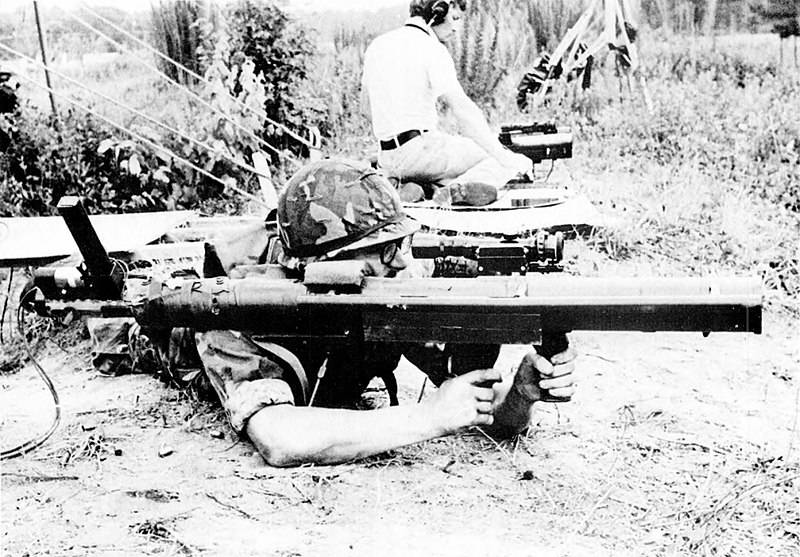
The SMAW grenade-launcher system is a reusable smooth-bore launching device with a length of 825 mm, to which a disposable transport-launch container with grenades of various types is connected with a quick-release coupling. On the 83,5-mm launch device, the fire control unit with two handles and an electric-type trigger mechanism, a bracket for mounting sights and a sighting rifle of 9x51 mm is mounted. Additionally, there is a backup open sight. In addition to the two arms and the shoulder rest, the starter is equipped with a folding bipedal bipod intended for shooting from a prone position.
After docking TPK with a starting device, the length of the weapon is 1371 mm. The grenade launcher device weighs 7,54 kg, the mass of the weapon in the combat position, depending on the type of shot - from 11,8 to 12,6 kg. The grenade launcher is served by two combat crew numbers (shooter and loader). At the same time, the practical rate of fire is 3 shot per minute. But if necessary, one person can fire.
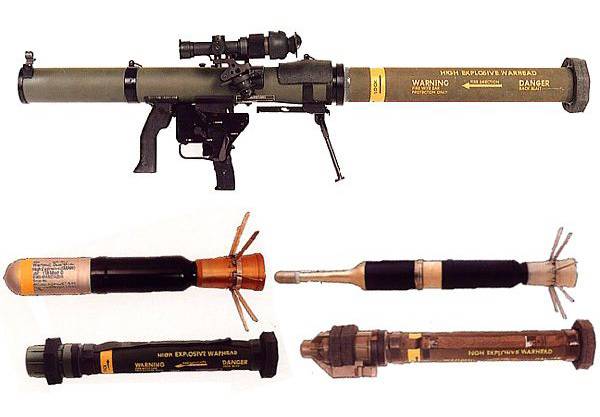
Multipurpose grenade launcher Mk 153 SMAW in a combat position with a high-explosive and cumulative grenades
Semi-automatic sighting rifle, coupled with the launcher, is designed to increase the likelihood of hitting the target. The ballistic characteristics of tracer 9-mm bullets coincide with the trajectory of the jet grenades at ranges up to 500 meters. Tracing cartridges of Mk 217 are equipped in detachable box magazines for 6 pieces.

In the course of aiming, the grenade launcher performs a coarse aiming with the help of an 3,6-x multiple optical or night sight AN / PVS-4, then opens fire from the sighting device, and along the bullet routes introduces the necessary corrections to the sight in range and direction or side wind. After the tracer bullets hit the target, the shooter triggers the trigger and launches the rocket grenade. At a short range or with a shortage of time, a shot is fired without adjustment.
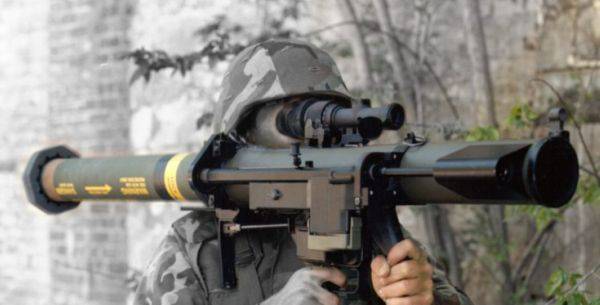
Adoption of the Mk 153 SMAW grenade launcher took place in 1984 year. At first, the main customer of the grenade launcher was the Marine Corps. Unlike other models of reusable jet grenade launchers previously used in the United States, the main purpose of the 153 SMAW Mk was to suppress firing points, destroy field fortifications, clear wire obstacles and anti-hedgehogs. The fight against armored vehicles was viewed as a secondary task, which was reflected in the nomenclature of ammunition. All rocket-propelled grenades have the same scheme, with a solid-fuel jet engine installed in the tail section and drop-down stabilizers after their departure from the barrel.
The main ammunition was originally considered a high-explosive grenade Mk 3 HEDP (eng. High-Explosive Dual-Purpose - a high-explosive, dual-purpose), leaving the barrel with an initial speed 220 m / s. Warhead high-explosive ammunition, containing 1100 g of powerful explosives, was completed with a contact piezoelectric fuse. The shell can pierce 200 mm of concrete, 300 mm of masonry, or 2,1 m of sandbag walls. The fuse automatically selects the moment of blasting and distinguishes between "soft" and "hard" targets. On "soft" objects, such as sandbags or earthen paralevel, detonation is delayed until the projectile penetrates the target as deeply as possible, producing the greatest destructive effect. The cumulative grenade Mk 6 HEAA (eng. High-Explosive Anti-Armor - armor-piercing-explosive) is effective against armored vehicles with uncovered dynamic armor, and when encountered at an angle of 90 ° it can penetrate 600 mm with a homogeneous armor plate. Training munition mk 4 CPR (eng. Common practice - common practice) is similar in ballistic characteristics to high-explosive fragmentation mk Xnumx HEDP. The plastic shell of blue color is equipped with a white powder, giving a clearly visible cloud when hit by a solid barrier.
Some time after the 83,5-mm universal grenade launcher was put into service, several more types of specialized ammunition were created for it. The 80 NE Mk grenade (eng. Novel Explosive - high-explosive new type) is filled with a thermobaric mixture, according to the destructive effect it is equivalent to approximately 3,5 kg of TNT. Several years ago, a high-explosive fragmentation grenade with a tandem warhead was adopted for a grenade launcher, designed for breaking through reinforced concrete and brick walls. The lead warhead punches a hole in the wall, after which the second, fragmentation, warhead flies after it and hits the enemy in the shelter. For use in urban environments, rocket-propelled grenade launchers with a CS marking (Eng. Closed Space), which can fire from closed premises, are delivered to the troops. In addition to the cumulative grenades, all other combat rocket grenades can be used to destroy lightly armored vehicles.
In the US Marine Corps, each company possesses six MK 153 SMAW grenade launchers, which are available in the fire support platoon. The squad includes an assault squadron (section) of fire support of thirteen personnel. Each fire support unit, in turn, consists of six calculations, commanded by a sergeant.
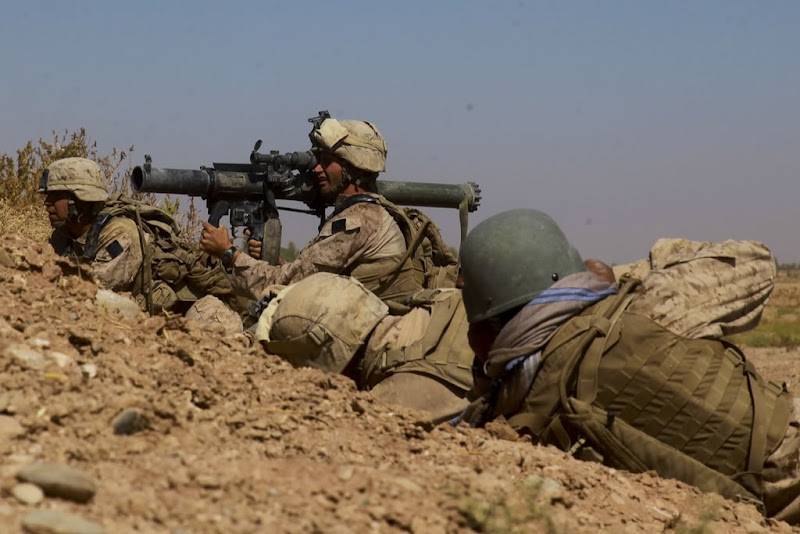
During Operation Desert Storm, the SMAW grenade launcher was used by the USMC to destroy the field fortifications of the Iraqi army. In total in the conflict zone at the disposal of the Marines there were 150 grenade launchers and 5000 shots to them. According to the results of a positive experience with the use of assault grenade launchers, the army command ordered 153 SMAW modified for parachute landing with the Mk, which entered the 82 airborne division.
In the middle of the 90-x specifically for the army units created a disposable assault grenade launcher M141 SMAW-D. A single-action grenade launcher weighs 7,1 kg. Length in the stowed position - 810 mm, in combat - 1400 mm.
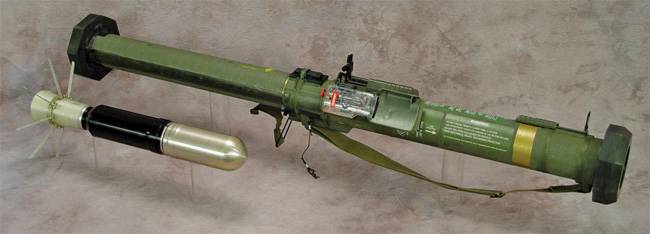
Disposable assault grenade launcher M141 SMAW-D in the combat position and rocket launcher in the configuration after taking off from the barrel
The US Congress approved the purchase of 6000 disposable assault grenade launchers, which are considered to be a cheaper and more effective alternative to the M136 / AT4 when used against bunkers, bunkers and various shelters. The M141 SMAW-D uses a high-explosive action grenade Mk 3 HEDP with an adaptive fuse.
In 2008, based on the experience of combat use of the 153 SMAW Mk, a program to create an improved reusable SMAW II grenade launcher was launched. While maintaining the existing range of ammunition, the updated grenade launcher was required to reduce weight, increase safety for calculations and the possibility of using in cramped conditions. Due to the use of new, more durable composite materials and the replacement of the sighting rifle with a multifunctional thermal sight with a laser rangefinder and a ballistic processor, the weight of the launcher was reduced by 2 kg. Development of the scope for SMAW II was carried out by Raytheon Missile Systems Corporation. Tests of weapons that received a serial index Mk 153 Mod 2, began in the year 2012. It is reported that the Marine Corps intends to order 1717 new launchers worth $ 51700000. Thus, the cost of one launcher, equipped with new sighting equipment, will be $ 30110, excluding the price of ammunition. The effectiveness of the grenade launcher is also supposed to be enhanced by the introduction of programmable fragmentation ammunition with air explosions, which will allow the destruction of the manpower hiding in the trenches.
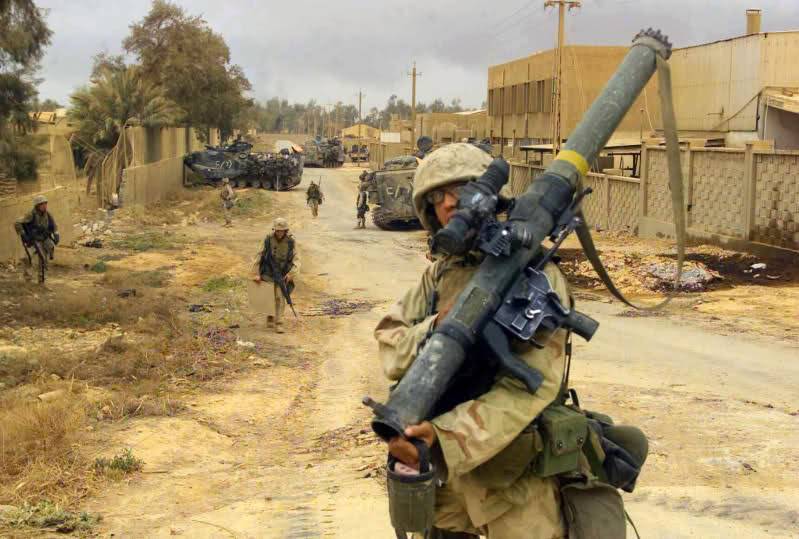
Grenade launchers Mk 153 SMAW and M141 SMAW-D are popular among the troops. During the fighting in Afghanistan and Iraq, multifunctional assault grenade launchers have proven to be a powerful and fairly accurate means of dealing with long-term firing points and fortified positions, also suitable for the effective destruction of enemy personnel. In Afghanistan, American paratroopers and marines often fired MK 153 grenade launchers at the entrances to the caves with the Taliban entrenched there. In the course of the sweeps carried out in the villages, in the case of armed resistance, the high-explosive jet grenades of the MK 3 HEDP easily breached the walls constructed of sun-dried clay bricks.
In 2007, in Iraqi Mosul, for the first time, 83 mm Mk 80 NE rocket-propelled grenades with a thermobaric warhead were used for the first time. It is noted that such ammunition proved to be especially effective when hit by windows and doorways of buildings where militants were seated. In some cases, when, due to the proximity of the line of contact, it was impossible to use Aviation and artillery, SMAW grenade launchers turned out to be the only weapon capable of solving a combat mission. In addition to the ILC and the US air assault units, the Mk 153 SMAW is in service in Lebanon, Saudi Arabia and Taiwan.
As is known, the Command of Special Operations Forces and the US Marine Corps have the opportunity to independently choose for themselves and purchase various weapons independently of the army. In the past, there were frequent cases when small-scale samples or imported weapons, purchased in small quantities, came into service with the Marines or special forces units.
Since the portable light ATGM M47 Dragon did not meet the requirements of reliability, was frankly inconvenient to use and had low combat effectiveness, small units operating in isolation from the main forces required a reliable and easy-to-use anti-tank tool that exceeded the firing range of disposable grenade launchers and capable firing high-explosive fragmentation projectiles.
In the middle of 80, the Special Operations Forces Command ordered several dozen 84-mm Carl Gustaf M2 rocket launchers (military index M2-550), which arrived at 75 -th Ranger Regiment, replacing the 90-mm KXMXX Rocketless Rifle. The Carl Gustaf M67 grenade launcher, which entered service in Sweden at the start of the 2, was a further development option for the Carl Gustaf m / 70 (Carl Gustaf M48) model 1 of the year and had several advantages over the 1948-mm M90 grenade launcher. “Karl Gustov” is a more accurate and reliable weapon, its dimensions and weight were less than that of the American grenade launcher, and the range of effective fire and armor penetration is higher. An uncharged Carl Gustaf M67 with a double optical sight weighs 2 kg and has a length of 14,2 mm, which is 1065 kg and 1,6 mm less than the M311. In addition, the Swedish rocket launcher used a wider range of ammunition. However, the mass and dimensions of the Swedish grenade launcher nevertheless proved to be very significant, and as a mass antitank weapon in the near zone in the USA, they chose the disposable M67 / AT136 grenade launchers, which used the cumulative FFV4 grenade designed for Carl Gustaf M551. However, in the course of various “establishing democracy” companies, it turned out that in the tactical level “platoon-company” the American infantry badly needed a universal reusable grenade launcher capable of not only fighting with tanks at a distance of 2-300 m, but also suppress enemy firing points beyond the range of effective fire from light weapons. So how to use for this ATGM was too expensive.
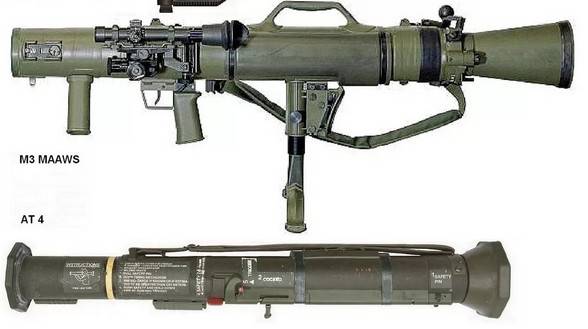
In 1993, in the United States, under the MAAWS program (the Multi-role Anti-Armor Weapon System), the tests of the new Carl Gustaf M3 grenade launcher began. The weight of the Carl Gustaf M2 dropped over Carl Gustaf M3. than on 3 kg. It was possible to lighten the weapon thanks to the use of a reinforced fiberglass barrel, into which a thin-walled steel rifled liner was inserted. Initially, the barrel's life was limited to 500 shots. However, tests showed that it withstands more than 2000 without any consequences Shots, but for safety purposes, the assigned resource is 1000 shots.The 3-x optical telescopic sight or duplicating mechanical aiming devices are used for aiming the weapon. For shooting from a prone position, in addition to the height-adjustable monopod, which is also used as a shoulder rest A two-legged bipod can be installed. To improve shooting efficiency, an optoelectronic sight combined with a laser rangefinder or night optics is provided.
The loading of the M3 MAAWS is made from the breech of the weapon. The left-leaning shutter is equipped with a conical nozzle (venturi tube). Combat rate is 6 rds / min. In battle, the grenade launcher is served by two calculation numbers. One soldier fires, and the second performs the duties of a loader and spotter-observer. In addition, the second number carries 6 shots to the grenade launcher.
The ammunition consists of shots with cumulative (including tandem) combat units with 600-700 mm armor penetration, armor-piercing high-explosive (anti-bunker), high-explosive fragmentation, fragmentation with programmable air blasting, gauge, lighting and smoke. Projectiles designed to combat armored vehicles, have a jet engine, run at a safe distance after departure from the barrel. The initial velocity of the shells - 220-250 m / s.
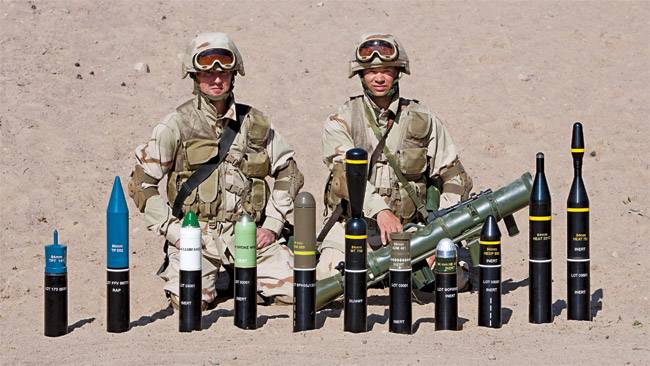
A total of 12 different types of ammunition is available for shooting from the grenade launchers of the Carl Gustaf family, including two training with inert content. A relatively recently developed projectile HEAT 655 CS, which can be used in limited quantities due to the use of small non-combustible granules as an anti-mass. Another recent innovation was the creation of a shotgun shot, which contains 2500 tungsten balls with a diameter of 2,5 mm. Although the shot shot range is only 150 m, it mows down all living things in the 10 ° sector. In real combat operations, a grenade launcher in more than 90% of cases was used against fortifications and suppression of enemy fire, for which high-explosive fragmentation shells were used. The real cases of using M3 MAAWS against armored vehicles can be counted on the fingers, which, however, is not connected with the shortcomings of the grenade launcher, but with the fact that Americans prefer to fight "remotely", knocking out enemy armored vehicles with aircraft and long-range systems.
For the first time in combat, the US military tried out M3 MAAWS in Afghanistan in 2011. Grenade launchers were used as a means of fire reinforcement of mobile groups and at stationary roadblocks. At the same time, projectiles with air explosions demonstrated special effectiveness. Their use made it possible to destroy militants who had taken refuge among the stones at a distance of up to 1200 meters. At night, 84-mm projectiles were fired to control the terrain.
According to information published in Jane's Missiles & Rockets in 2015, the US Army has officially adopted the Carl Gustaf M84 (MAAWS) 3mm rifled hand-held anti-tank grenade launcher manufactured by the Swedish group Saab AB. According to the staffing table, the M3 MAAWS grenade launcher crew is added to each infantry platoon. Thus, the US Army Infantry Brigade will be armed with 27 84-mm grenade launchers.
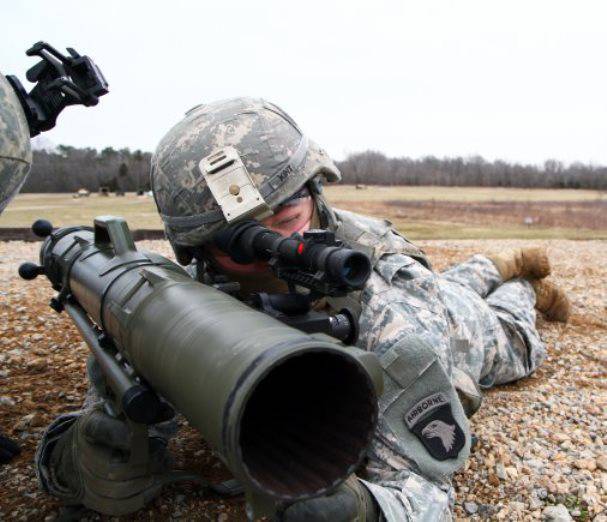
Shortly after adopting the M3 MAAWS, information about testing the next model in the US - Carl Gustaf M4 - appeared. The updated grenade launcher has become even easier due to the use of a titanium barrel with a carbon nozzle. In general, the weight of the barrel decreased by 1,1 kg, the weight of the nozzle - by 0,8 kg, the new carbon fiber body saved 0,8 kg more. The length of the barrel is reduced from 1065 to 1000 mm. Resource grenade remained the same - 1000 shots, to control the state of the barrel added mechanical shots counter. The introduction of a double protection fuse made it possible to carry a charged grenade launcher, which was forbidden on earlier models. The new version of Carl Gustaf has become much more convenient. The front handle and the support under the shoulder are movable and allow the shooter to adjust the grenade launcher to his individual characteristics. Another guide, located on the right, is designed to install additional devices, such as a flashlight or laser pointer.
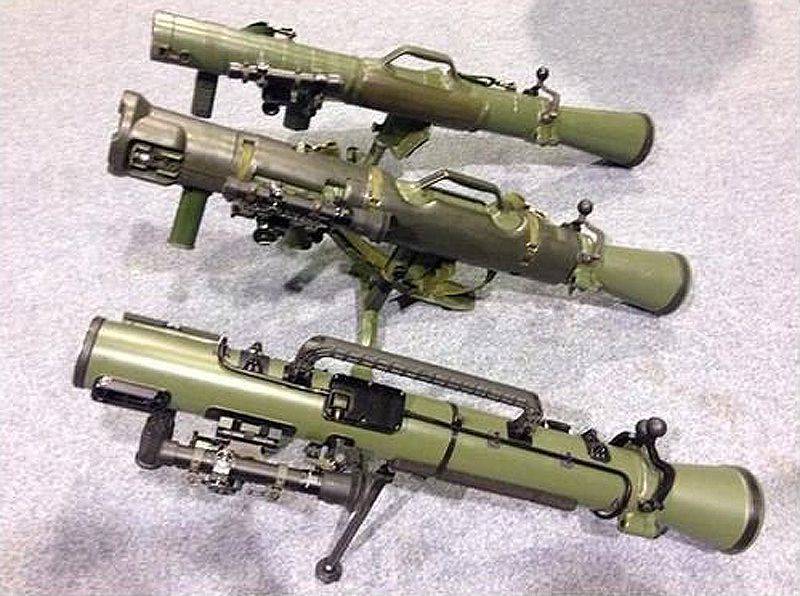
An important feature of the M4 is the ability to install a computerized sight, which, due to the presence of a laser rangefinder, temperature sensor and communication system for two-way interaction of the sight and projectile, can with high accuracy make the pickup point and program the air blasting of a fragmentation warhead. It is reported that for Carl Gustaf M4 a controlled soft-start anti-tank missile is being created, the main engine of which is launched at a safe distance from the muzzle. The rocket is equipped with a thermal homing head and captures before launch. Attack of the target takes place from above.
Long before the adoption of Karl Gustov grenade launchers in the United States, it received the widest distribution and was officially supplied to more than 40 countries of the world. The rocket launcher has demonstrated its high performance in many regional conflicts. It was used by the Indian army during the Indo-Pakistan wars, during the Vietnam war, in Middle Eastern conflicts, in the armed confrontation between Iran and Iraq. One of the most interesting episodes of using the 84-mm grenade launcher is the shelling of the Argentine corvette “Guerrico”. The 1320 warship with a full displacement was damaged by fire from the 3 coast on April 1982, when, during the Falklands conflict, it attempted to support the landing of Argentine troops in the Grytviken port. The Argentine sailor died and several people were injured. Subsequently, the British Marines used grenade launchers during the assault on Argentine fortifications on the Falklands. Grenade launchers "Karl Gustov" were actively used to fire stationary targets and against armored vehicles in Libya and Syria. In addition to the outdated T-55, T-62 and BMP-1 tanks, Swedish-made 84-mm grenade launchers were destroyed and several T-72s destroyed by fire. Despite the fact that the prototype grenade launcher 70 years ago, thanks to a successful design, high modernization potential, the use of modern structural materials, new ammunition and advanced fire control systems "Karl Gustov" will remain in service in the foreseeable future.
To be continued ...
Based on:
http://army-news.ru/2012/09/istoriya-protivotankovyx-granatomyotov/
http://www.designation-systems.net/dusrm/r-17.html
http://www.military-today.com/firearms/fgr17_viper.htm
https://fas.org/man/dod-101/sys/land/at4.htm
http://nevskii-bastion.ru/carl-gustaf/
http://www.americanspecialops.com/special-ops-weapons/carl-gustav.php
https://modernfirearms.net/ru/granatomety/ssha-granatomety/mk-153-smaw/
http://blogcenzurowany.blogspot.ru/2012/03/granatnik-mk153-czyli-b-300.html
http://www.janes.com/defence/weapons
- Linnik Sergey
- American infantry anti-tank weapons (part of 1)
American infantry anti-tank weapons (part of 2)
American infantry anti-tank weapons (part of 3)
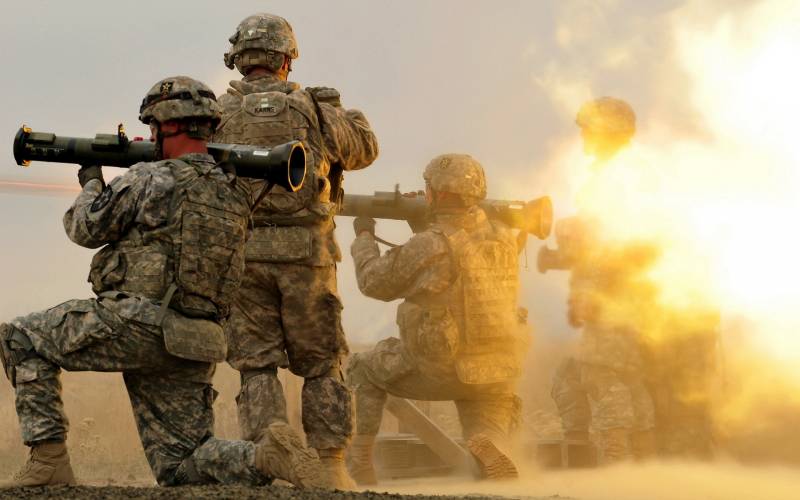

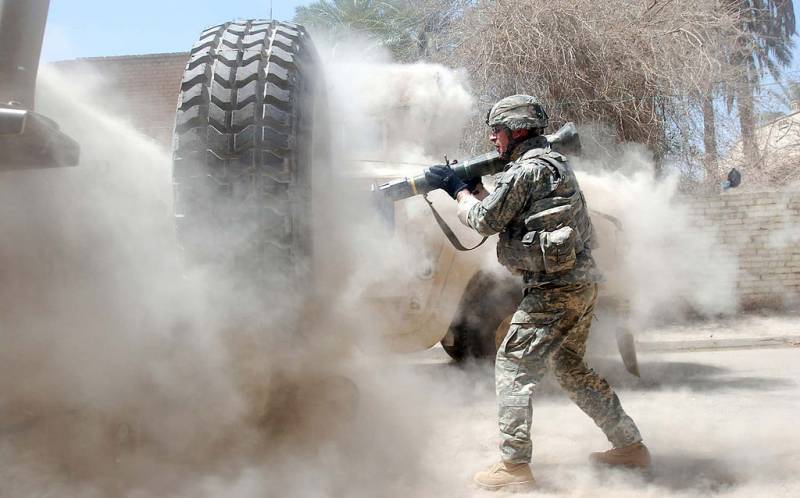
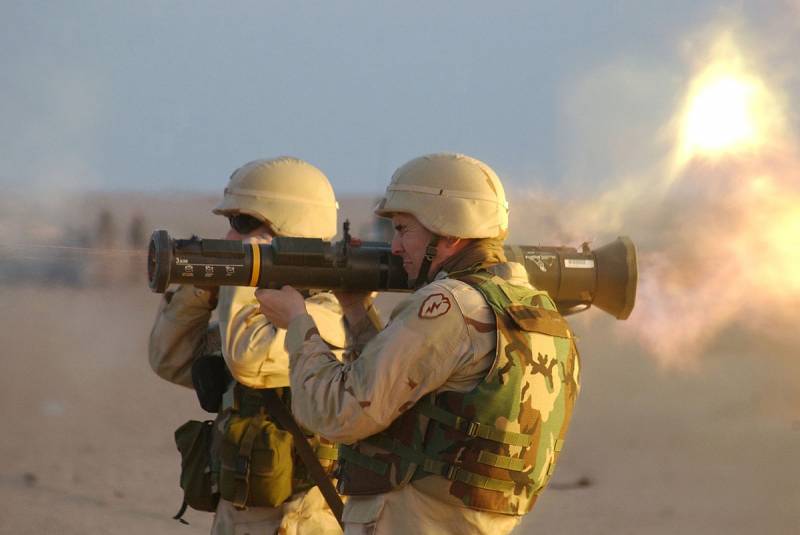
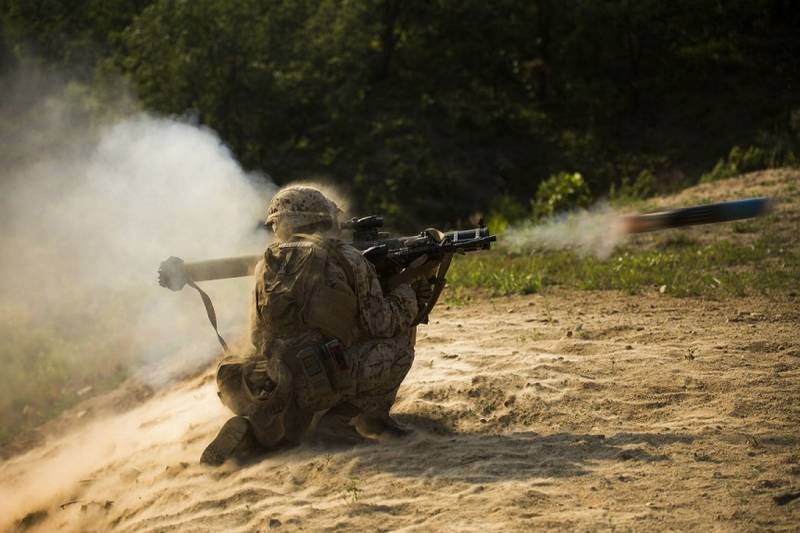
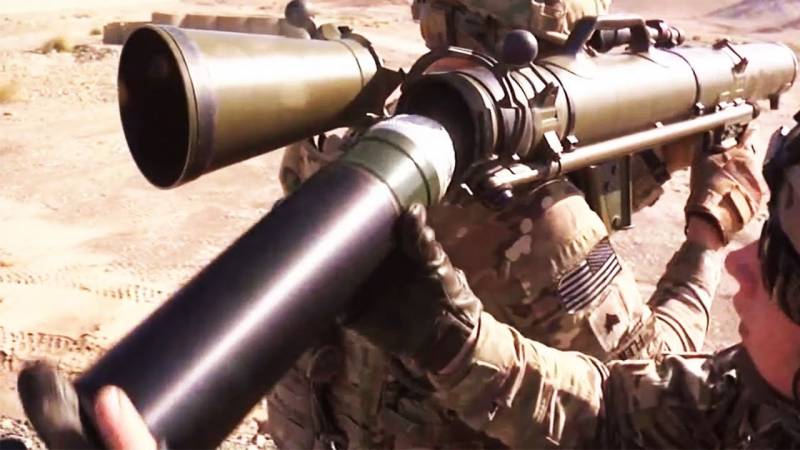
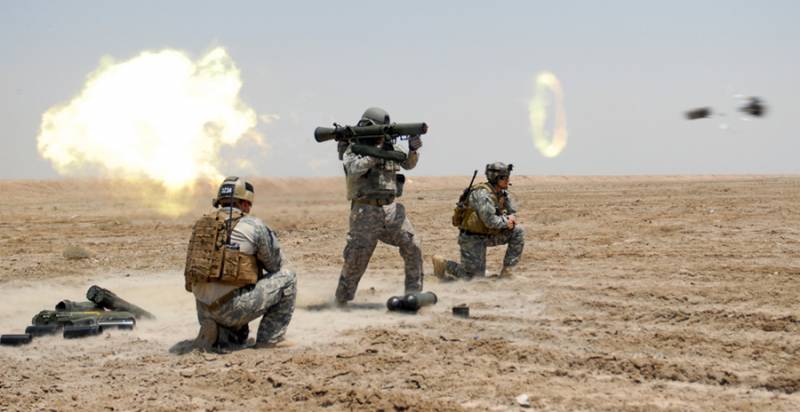
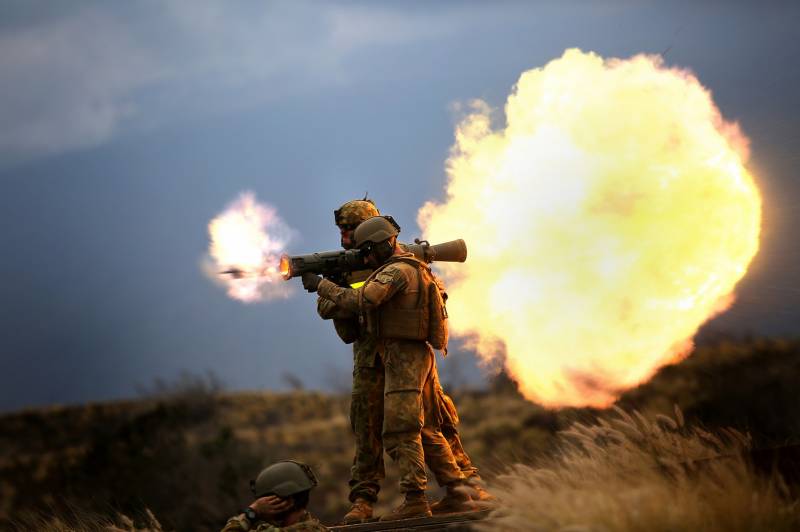
Information